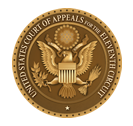The impetus behind this post is a specific discussion that took place on an e-mail list. The question under discussion was how to license student work for deposit in an institutional repository. At one point I said that a license could be created by a simple line in the syllabus for a course that said that certain designated works would be put in the repository, followed by the “performance” (used in contract law to refer to conduct related to the bargain) of handing in those works. This claim, which I thought was innocuous, was disputed.
The whole discussion reminded me that there are some serious misapprehensions about contracts, contract law, and licensing in the academic world. So rather than continue the debate on the list, I thought I would offer some basic truths about contracts and licenses in this space. That way my musings only clutter the in-boxes of those who subscribed, rather than everyone on the list. And the debate, if needed, can continue, because the comments will be open, as they are for all posts on this blog. I should add that what I say here is based on U.S. law, and mostly on the Uniform Commercial Code, which has been adopted into the commercial law governing contracts in every U.S. state.
So let’s start at the beginning. A contract is simply a promise that the law will enforce. The law does not enforce all promises, but a promise need not be very formal to be a binding contract. All that is needed is an offer, an acceptance of that offer, and some “consideration,” which simply means that each party must get something out of the bargain.
But there is more to say about contracts. One of the most important points is that contracts are business documents, intended to accomplish specific goals shared by the parties. Legal language is less important to a contract than a clear expression of the intent of the parties — what they want the contract to accomplish in their relationship. Lawyers are actually not the most important people in the drafting of a contract, the parties are, because they know what they want the contract to do. The cleanest or most formal legal language in the world is useless if it fails to express those intentions.
Perhaps because we so often deal with obscure and lengthy database licenses from vendors with lots of lawyers on staff, librarians tend to think of contracts as big, formal and very serious, even frightening, documents. But a contract can be very simple, and it need not even be a document. If my neighbor comes to my door and offers to cut my lawn for $30, and I say OK, we have formed a contract at that moment. Note what the “consideration” is — a promise to cut my lawn and a promise to pay $30. Promises are the most common type of consideration in a contract, but an offer for a contract can be accepted by performance. Suppose I asked my neighbor if he would cut my lawn for $30 and he said nothing. But later that same day, he does cut my lawn. I owe him $30 and the law would enforce the promise because my neighbor accepted my offer in a timely way by the act of cutting the lawn — there was an offer, acceptance by performance, and consideration on both sides; I got a neater lawn and he got my enforceable promise to pay $30.
Another reason librarians might think that contracts are formal and serious is because they hear so often that contracts “trump” copyright law. Since copyright law is a very important federal law, contracts must be an even more serious matter to trump it. But, actually, we allow contracts to supersede copyright law not because they are so “big” but because they are small. U.S. Copyright law binds every person who is subject to its jurisdiction, but a contract binds only the parties who agree to it. A contract is a “private law” arrangement by which two parties (or sometimes more) rearrange their own relationship. Within that relationship, we will allow parties to agree to give up various rights — under copyright, for example. They could even surrender their free speech rights in some limited cases. This is not because contracts are “stronger” but because they are “weaker” then other parts of the law — they only rearrange the rights of those who agree to them.
One way we can tell that contracts are “weaker” in this sense than the law that binds all citizens is that the risk associated with failing to fulfill a contractual promise is usually much lower than it is for a violation of public law. Contract damages are generally determined by the intended relationship expressed in the contract. In my example above, if I “breach” the contract by not paying my neighbor, the law could force me to give him “the benefit of the bargain,” which in that case was $30. In most situations, that would be it; there are no statutory damages for contracts as there are in copyright law, for example, and the goal of contract “remedies” is usually either just to see that the parties get what they bargained for, or, at least, to put them back in the positions they were in before the contract was formed. As a lawyer, I would never advise someone to do something I believed was an infringement of copyright, but it is possible to imagine situations where breaching a contract could make sense; the classic example is where a business person can make a greater profit if they get out of the contractual relationship even if they have to pay damages. Such a situation is called an “efficient breach of contract.”
One final general point about contracts before we turn to licenses specifically. A contract is often “implied” by the way the parties behave. In my example above we saw that a contract could be formed when the person who received my offer simply acted on it; his acceptance was implied by performance. Only a very few contracts must be in writing, and they are specified by law. The copyright law tells us, for example, that transfers of copyright and exclusive licenses must be in writing (see section 210(d)), but non-exclusive licenses can certainly be implied. Most states require that sales of real property be in writing, through laws referred to as “Statute(s) of Fraud,” but it is quite clear that many other contracts can be oral, or even evidenced by some kind of action. “Shrink wrap” licenses for software are a good example, where opening and using the product is a sufficient indication that the purchaser has accepted the terms of use (see ProCD, Inc. v. Zeidenberg, 86 F.3d 1447 (7th Cir. 1996).
In the copyright realm, implied licenses are actually quite common. A license, remember, is simply “a revocable permission to commit some act that would otherwise be unlawful” (from Black’s Law Dictionary). Note that a license is presumed to be revocable unless there is explicit agreement otherwise; for this reason, an implied license is always revocable. But, as I say, they are very common. The example we all rely on most, I dare say, is the implied license created whenever someone puts a page up on the Web. When I look at that page, I am making an apparently unauthorized copy in the cache of my computer, which looks like an infringement. But courts around the world have recognized that it would be absurd to allow a webpage author to sue anyone who looked at the page for infringement, and have instead found an implied license in the act of uploading a page. There is an interesting discussion of a case that tested the limits of an implied license here, on Forbes.com.
A license is not always a contract, but most are. In the case of an implied license to view a web page, one could argue that there is offer and acceptance, but it does not seem that there is consideration, something that each side gets out of the bargain. So it may be a non-contractual license, but it is a license all the same.
When we turn, finally, to the case of a syllabus that informs students that certain work they hand in will be made publicly accessible through an institutional repository, I think we can now see that all of the elements of a license, and even a contractual license, are present. There is an offer made — in exchange for a grade and credit in this course, you will give the school a license for IR deposit. And when the work is handed in, there is a performance from which acceptance of that offer is readily implied. In this case, I also think there is consideration, since the student gets that grade and credit she bargained for (she could, of course, have rejected the offer by dropping the course, or she could even have counter-offered by asking for different terms), and the school gets a license. This is a valid contract that creates a license upon which the school can rely.
To say that the license is valid is not the same as saying it is wise to do this. It also ignores some other issues. A university might decide, for example, that putting work in a repository implicates privacy rights and therefore requires an explicit writing. But as a contract matter, the license is real and reliable. It is presumptively revocable, as explained above. So the situation might arise where the student decides she now longer wants her undergraduate essay on the web and requests that it be removed. In that situation I would first want to talk with the student and see if we could find an agreement that would leave the terms of the course assignment intact. If we could not reach such an agreement, I would suggest that the school should remove the work, because once the license is revoked the continued distribution could be an infringement of the student’s copyright. But in that instance, the school is then entitled to consider whether the student has met the requirements for credit. If public distribution is considered a sufficiently important part of the pedagogy, the school could conclude that credit for the course should be revoked. This is simply acknowledging the mutual bargain that exists in all contracts.
As I argued on the list, this form of implied license is not legally different from many teaching strategies that implicate copyright. Suppose an art class tells students (either orally or in the syllabus) that their final projects will be included in a public departmental exhibition. Copyright is implicated, and a license is implied when the final project is handed in. The same would be true if a class assignment required students to create a web page, post a video to YouTube, or have a class discussion via Twitter. The point here is not to recommend or condemn any of these strategies, but merely to explicate the law that would support all of them.
The truth about contracts is that we deal with them every day. They need not be formal, and they need not intimidate us. They are simply the mechanism we use to arrange our relationships in a great many situations, including teaching situations that implicate the copyrights held by students.



